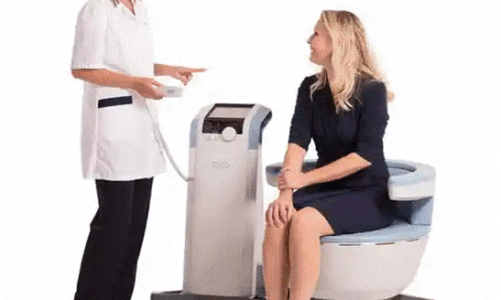Many factors that can lead to cerebral palsy (CP) begin before a baby is even born. These are called prenatal factors. It’s a complex area, and often, there isn’t one single cause, but a combination of things.
Genetic Abnormalities
Sometimes, changes in a baby’s genes can play a role. These genetic issues might happen by chance when the baby is developing, or they could be inherited from parents. These genetic differences can affect how the brain grows and forms. While not the most common cause of CP, it’s something doctors consider, especially if there’s a family history or other signs of genetic conditions. It’s important to remember that having a genetic abnormality doesn’t automatically mean a child will develop CP, but it can increase the risk.
Maternal Infections During Pregnancy
If a mother gets certain infections while she is pregnant, it can sometimes affect the baby’s developing brain. These infections can cross the placenta and reach the baby. Some common examples include:
- Toxoplasmosis: A parasite found in undercooked meat or cat feces.
- Cytomegalovirus (CMV): A common virus that usually causes mild symptoms in adults but can be serious for a developing fetus.
- Rubella (German Measles): Though less common now due to vaccination, it can cause significant harm if contracted during pregnancy.
- Herpes Simplex Virus (HSV): Can be passed to the baby during birth.
These infections can cause inflammation in the baby’s brain, leading to damage that results in CP. Prompt medical care and prevention, like vaccinations and avoiding certain exposures, are key for mothers.
Placental Problems
The placenta is the organ that provides oxygen and nutrients to the developing baby. If the placenta doesn’t form correctly or has issues, it can impact the baby’s growth and brain development. Problems can include:
- Placental insufficiency: Where the placenta doesn’t deliver enough oxygen or nutrients.
- Placental abruption: When the placenta separates from the uterine wall too early.
- Problems with the umbilical cord: Such as knots or compression, which can restrict blood flow.
Any issue that limits the baby’s oxygen supply before birth is a serious concern and can contribute to the development of CP.
Cerebral Palsy Causes: Perinatal Influences
The period surrounding birth, known as the perinatal phase, is a critical window where certain events can significantly impact a baby’s developing brain, potentially leading to cerebral palsy. These influences, occurring from around 28 weeks of gestation up to about a month after birth, are a major area of focus when discussing CP causes.
Premature Birth Complications
Babies born too early often face a higher risk. Their bodies and brains are not fully developed, making them more vulnerable to problems. Issues like underdeveloped lungs can lead to breathing difficulties, which in turn might affect oxygen supply to the brain. They can also be more prone to infections and bleeding in the brain, both of which are known contributors to cerebral palsy. The longer a baby stays in the NICU, the more potential exposures they might have, though medical teams work hard to prevent complications.
Birth Asphyxia and Hypoxia
This refers to a lack of oxygen reaching the brain during the birth process. It can happen for several reasons. Sometimes, the umbilical cord might get compressed, cutting off oxygen flow. In other cases, the baby might have trouble breathing immediately after birth. When the brain is deprived of oxygen for too long, brain cells can be damaged, leading to conditions like CP. Medical professionals monitor babies closely during labor and delivery to spot any signs of distress and intervene quickly if oxygen levels drop. Understanding the risks associated with oxygen deprivation during birth is key.
Low Birth Weight
Babies born weighing less than 5.5 pounds (about 2.5 kilograms) are considered to have low birth weight. This is often linked to premature birth but can also occur in full-term babies. A low birth weight can indicate that the baby did not grow as expected in the womb, which might mean their brain development was affected. These babies often require extra medical attention and monitoring after birth because they are at a greater risk for various health issues, including developmental challenges and cerebral palsy. Factors contributing to low birth weight can include maternal health, nutrition, and placental function.
Cerebral Palsy Causes: Postnatal Factors
While many causes of cerebral palsy (CP) are linked to events before or during birth, some factors can arise after a baby is born. These postnatal influences, though less common, can also lead to brain damage that results in CP. It’s important for parents to be aware of these potential risks.
Infant Infections
Serious infections in the first few months of life can sometimes affect a baby’s developing brain. Conditions like meningitis, which is an inflammation of the membranes surrounding the brain and spinal cord, or encephalitis, an inflammation of the brain itself, can cause permanent damage. These infections can be caused by bacteria or viruses and require immediate medical attention. Prompt diagnosis and treatment are key to minimizing the risk of long-term neurological issues. The severity of the infection and how quickly it’s treated play a big role in the outcome.
Head Injuries in Early Childhood
Traumatic brain injuries (TBIs) sustained in infancy or early childhood are another potential cause of CP. These injuries can occur from falls, accidents, or unfortunately, from abuse. Even a seemingly minor bump to the head, if severe enough or repeated, can lead to brain damage. Protecting a child from head injuries is paramount. This includes using car seats correctly, ensuring safe play areas, and supervising young children closely. Any significant head trauma should be evaluated by a medical professional.
Brain Hemorrhages
Bleeding within the brain, known as a brain hemorrhage, can happen after birth, particularly in premature infants. These bleeds can disrupt blood flow and oxygen supply to parts of the brain, leading to damage. Factors that can contribute to hemorrhages include a fragile vascular system, which is more common in very premature babies, or complications from certain medical conditions. Doctors monitor infants at risk for these events closely. Understanding the various factors that can lead to CP is important for parents, and this includes looking at events that happen after birth, not just those that occur before or during delivery. For more information on CP, you can explore what cerebral palsy is.
Exploring Specific Cerebral Palsy Causes
Sometimes, cerebral palsy can be linked to very particular issues that affect a baby’s brain development or cause damage. These aren’t always the most common causes, but they are important to be aware of.
One such cause is kernicterus, which is a severe form of jaundice. When a newborn’s jaundice isn’t treated properly, a substance called bilirubin can build up in the brain. This can lead to brain damage, and in some cases, cerebral palsy. It’s a situation that highlights how important it is for doctors to monitor and treat jaundice in newborns carefully.
Another specific cause can be a stroke that happens while the infant’s brain is still developing or shortly after birth. These strokes can disrupt blood flow to parts of the brain, leading to damage that affects movement. There are different types of infant strokes, and understanding them is key to figuring out why cerebral palsy might occur in certain situations. Identifying these specific events helps medical professionals provide better care and support.
Finally, congenital malformations of the brain are also a factor. These are abnormalities in how the brain forms before birth. They can range from minor issues to more significant structural problems. These malformations mean that certain areas of the brain might not develop as they should, impacting motor control. For parents, learning about these specific causes can be a lot to take in, but it’s part of understanding the full picture of cerebral palsy. It’s good to know that there are resources available to help explain these complex medical conditions, like information on what cerebral palsy is.
Risk Factors Associated with Cerebral Palsy Causes
Certain situations can make cerebral palsy more likely to occur. These aren’t direct causes, but rather conditions that increase the chance of brain damage happening. Understanding these risk factors can help parents and medical professionals be more aware.
Multiple Births
Having more than one baby at a time, like twins or triplets, is linked to a higher risk of cerebral palsy. This is often because multiple babies might share a placenta, or there can be complications during pregnancy and birth that affect them differently. Premature birth is also more common with multiple pregnancies, and as we’ve discussed, prematurity itself is a significant risk factor.
Assisted Reproductive Technologies
Treatments like IVF, which help people conceive, are also associated with a slightly increased risk. This connection is complex and not fully understood. It might be related to the fact that these technologies are often used by parents who might already have a higher risk of certain pregnancy complications, or perhaps the procedures themselves play a role. It’s important to note that the overall risk remains low, and these technologies help many families.
Maternal Health Conditions
The health of the mother before and during pregnancy plays a big part. Conditions such as:
- Thyroid problems
- Seizure disorders
- Uncontrolled diabetes
- Certain infections
can all raise the likelihood of a child developing cerebral palsy. Maintaining good health and managing existing conditions before and during pregnancy is therefore very important.




